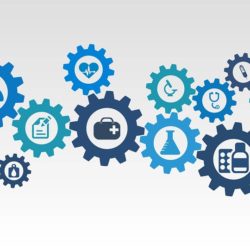
The Top 3 Ways to Reduce Health Inequality

How do we reduce health inequalities?
If you are lucky you never have to learn about health inequality. Born in a first-world country with socialized health care and blessed with genes that don’t misbehave it’s perfectly possible to live in a bubble in which health isn’t something you have to think about that often.
In truth, though, quality of health and access to care vary radically across the globe. So much of your health and well-being depends on where you live and the simple reality of this is shockingly unfair.
This is why Sustainable Development Goals 3 (Good health and well-being) and 10 (Reduced inequalities) are heavily linked. Poor health and inequality are some of our strongest demons and they feed more in certain areas of the world.
More importantly, poor health affects us all. The world is connected and is constantly strengthening this connection and this increased contact means the side effects of poor health can now spread much easier.
For the sake of our future we need a solution. The question, of course, is what can we do to help reduce health inequalities?
The first thing to do? In order to successfully reduce (or if we could, eliminate) health inequalities we obviously need to design and set up a plan to do this. Yes, this is something that has been done before, but we need to make sure this time we craft the right plan.
This is where big data will play a very important role. This innovation is the best way to collect the information needed to understand the problems. At the same time, though, that data needs to be properly clarified and analyzed to ensure the right information is being seen and used.
The Health Inequality Project sees the power in big data and is working towards a better future using its information. Its aim is to improve life expectancy across the income and social spectrum and reduce health inequality.
Electronic health records (EHRs) are another great example of the good things coming with big data, introducing an easy way to store and analyze health information while making it easier for lower-income people to access health care. This team up will do great things when it comes to getting health care to the underserved and properly documenting their needs.
Although big data may seem impersonal or intrusive, it actually stands as one of our best ways to level the playing field and make everyone’s voices matter.
Of course the most obvious way to make the system better is to, well, make the system better. If safeguards are put in place to ensure the health of all of a country’s citizens are actually being addressed the inequality chasm would shrink dramatically. Across the globe countries are taking note and are working together to make the needed changes.
The Rio Political Declaration on Social Determinants of Health is a joint effort of the World Health Organization (WHO) Member States and serves as a promise to increase and promote health equity.
Canada, as part of its efforts to meet this goal, created the Health Inequalities Data Tool as well as the Health Inequalities Reporting Initiative in order to better monitor health inequalities and find solutions.
As well, U of T’s Institute for Global Health Equity & Innovation (IGHEI) has created a seed grant program to support startups seeking solutions to health inequality.
Meanwhile, in our neighbor to the south, entrepreneurs are searching for more solutions.
Healthy People and its initiatives Healthy People 2020 and Healthy People 2030 aim to both reduce health disparities and improve health care access. Using modern technology and the assets that come with big data and smart data Healthy People is clearly laying out where we are and where we need to go.
This is a strong showing from North America and these are the initiatives we need if we want to fully achieve SDG 3 and 10.
Another route to take in order to improve our health and reduce inequalities is to reexamine how health care is delivered.
Thanks to the innovations found in HealthTech we now have new ways to do just this.
Modern healthcare is not necessarily bound to the hospital setting and this is making access easier for many that had previously been underserved.
Take Iora Health or American Well for example. These new systems use technology to improve their clients’ access to their services, offering health care professionals who can be reached several ways (phone, e-mail, video chat, in person). For the segments of the population who may not easily be able to get to doctors’ offices this will prove to be a godsend.
Remote access, combined with digital health innovations like Ada Health, K Health and Basil Leaf Technologies, will bring health care to a greater population and, in turn, help minimize health inequality.
Good health is incredibly important, arguably more important than good wealth.
That being said, it probably isn’t shocking to hear that poverty has a dramatic impact on one’s health. Naturally reducing poverty is a key part of solving health inequality (and inequality in general).
Poverty has a strong link to low vaccination rates and poor health in general. Truth be told, all our modern innovations won’t improve health on a global scale if income inequality isn’t also addressed.
In a fair world we would all have the same chance to pursue our dreams and this will never happen while inequalities maintain a strong hold.
We have the power to reduce and even eliminate them altogether. Solving health inequality will do so much good for the world and everyone deserves good health.
Let’s get to work.

